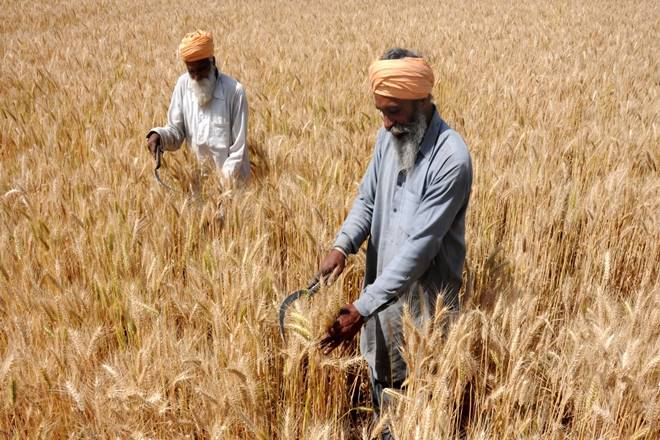By Satpal
There is a popular saying: “The best defense is a good offense.” And this adage sounds apt for the US, which, of late, has raised so many issues against India’s domestic support in its notification submitted to the World Trade Organisation (WTO) to use the Agreement on Agriculture’s article 18.7. This notification prepared by the US in May 2018 shows that India is breaking the WTO negotiations rule. Indeed, the US has not followed the multilateral rules. President Donald Trump continuously makes such policies that distort the world’s free flow of trade, including the hikes in import duty of 25% for steel and aluminium against China, and the imposed trade restrictions on Iraq.
The underlying issue is that the Indian government provided minimum support price (MSP) to its farmers-MSP is the price offered by the government to farmers for their harvest during a season. However, farmers are free to sell their crop to either government agencies or in the open market. As of now, MSP is recommended for 25 crops under three groups-kharif crops, rabi crops and other crops. As per the rules of the WTO, domestic support is categorised under two broad headings: trade distortion and non-trade distortion. Trade distorting support, which falls under the Amber Box subsidy, has a reduction commitment and has limited policy space. Non-trade distorting supports are Green Box and Blue Box subsidies, and these are free from any reduction commitments. The US, the EU, Canada and most of the developed world are investing huge amounts in their agriculture sector under this category.
MSP comes under trade distorting support, as per WTO provisions. Trade distorting domestic support is computed upon the current Aggregate Measurement of Support (AMS) and it has limitations of up to 10% for developing countries (except China; 8.5%) and 5% for developed countries. The AMS is further bifurcated under two headings. First, subsidies that have been provided to agriculture in general or non-product-specific subsidies, often called input subsidies. These may be provided up to 10% and 5% of the total value of production (in a specific year) to developing and developed countries, respectively. The second is product-specific support (PSS)-it may also be provided for up to 10% of the total value of specific product for developing and 5% for developed countries. If the PSS does not exceed specific limit-10% and 5%-then it is not required of any member countries to compute their current AMS or reduction commitment; it’s called de minimis limit (Agreement on Agriculture article 4b).
It is a big fraud under the WTO that Green Box subsidies are considered as non-reduction commitment because developed countries give a huge amount under this provision, while Amber Box subsidies are considered as trade distorting and have reduction commitment. Subsidies given by developing countries are counted under Amber Box. For example, most developing countries have set MSP for their crucial agriculture crops-most developing countries struggle with food security issues and self-sufficiency in food products, so they announce MSP. But some developed areas-the US, the EU and Canada-do not want to cooperate with developing countries for helping them achieve their goal of self-sufficiency in foodgrains. Developed countries, it appears, want to capture the food market of developing countries and it’s the reason they pressurise continuously to remove MSP from agricultural policies of developing countries.
The Indian government, in its Union Budget 2018-19, had announced the predetermined principle of offering to farmers a threshold MSP of at least one and a half times the cost of production (CoP) for kharif, rabi and other crops. The US has claimed that India under-reported domestic support for its agriculture sector and further claimed that it has also crossed the negotiated limit and given 65% and 76% domestic support during 2013-14 to wheat and rice, respectively. But the reality is that India did not cross the negotiable limit; we have negative percentage since 1995 in case of wheat and positive for rice (but under the permissible limit). The current aggregate measurements of support computation methodology are provided in annex 3, paragraph 8, for market price support, which is calculated using the gap between a fixed external reference price and the applied administered price (AAP) multiplied by the quantity of production eligible to receive the AAP.
The AAP is considered as India’s MSP and fixed external reference price (FERP) is defined in annex 3, paragraph 9, which states that this price is based on years 1986-88 Free On Board (FOB) and Cost Insurance and Freight (CIF) prices. The FOB price is used for net exporting countries, while CIF price is used for net importing countries.
Also read: Reverse swing! Foreign funds want Indian corporate debt, not sovereign bonds; here’s why
The government-fixed MSP during 2017-18 was $246.7 per tonne for rice and $252.13 per tonne for wheat. On the basis of this MSP, the government can procure 36.44 million tonnes of rice and 30.82 million tonnes of wheat for the same period. As per WTO rules, India gives only $576.15 million (2.15%) subsidies for rice, while India is entitled for $2,676.69 million (10%). The Indian government has been given $365.83 million (1.49 %) subsidies for wheat during 2017-18, while it can increase up to $2,458.27 million (10%) for product-specific support. Clearly, India has a huge policy space in terms of further hikes in MSP, and it can increase procurement quantity of rice and wheat. The issues that were raised by developed countries don’t appear to be genuine.
The author is senior research fellow-UGC, Economics, Banaras Hindu University, Varanasi


